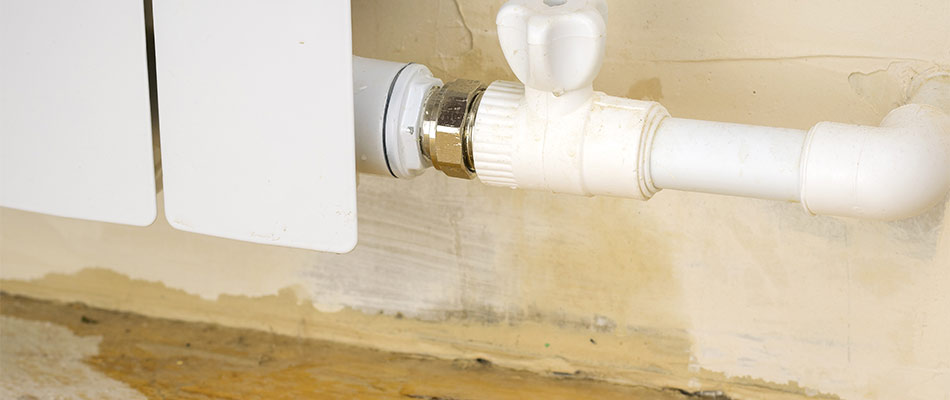Just how to Examine If Your House Has a Concealed Leak
Just how to Examine If Your House Has a Concealed Leak
Blog Article
We've encountered this great article involving Detecting hidden plumbing leaks listed below on the internet and thought it made sense to relate it with you here.

Early detection of leaking water lines can minimize a potential disaster. Some little water leakages may not be visible.
1. Check Out the Water Meter
Inspecting it is a proven means that assists you discover leaks. If it moves, that shows a fast-moving leak. This means you might have a slow-moving leakage that might even be below ground.
2. Inspect Water Usage
If you find sudden adjustments, in spite of your consumption being the exact same, it means that you have leaks in your plumbing system. An abrupt spike in your bill shows a fast-moving leak.
At the same time, a consistent increase each month, even with the same routines, reveals you have a slow leak that's also slowly rising. Call a plumber to thoroughly check your building, specifically if you really feel a cozy area on your floor with piping below.
3. Do a Food Coloring Examination
When it involves water usage, 30% comes from toilets. Test to see if they are running effectively. Decrease specks of food shade in the storage tank and wait 10 mins. If the color in some way infiltrates your bowl throughout that time without flushing, there's a leak in between the tank and also bowl.
4. Asses Outside Lines
Don't forget to check your outside water lines as well. Needs to water leak out of the link, you have a loosened rubber gasket. One small leakage can squander bunches of water and surge your water expense.
5. Examine and Evaluate the Situation
Homeowners ought to make it a routine to check under the sink counters and even inside cupboards for any kind of bad odor or mold and mildew growth. These two warnings show a leakage so punctual attention is required. Doing routine assessments, also bi-annually, can conserve you from a significant trouble.
Inspect for discolorations as well as weakening as a lot of appliances as well as pipelines have a life span. If you suspect leaking water lines in your plumbing system, do not wait for it to rise.
Early detection of leaking water lines can alleviate a possible disaster. Some tiny water leaks might not be noticeable. Examining it is a surefire way that helps you find leaks. One small leakage can throw away bunches of water and spike your water bill.
If you suspect leaking water lines in your plumbing system, don't wait for it to escalate.
5 Signs that Your Home Has a Hidden Leak
Your water bill is unusually high without explanation
Generally, your water bill tends to stay consistent throughout the year as long as the same number of people live in your household year round. The bill might be higher during certain times of the year, such as summer, when your lawn may require more watering than it does in cooler months. However, if you notice a rise in your water bill that you can’t explain, it’s an indicator that there’s a hidden leak somewhere in your home.
You hear running water
One of the biggest signs that you have a water leak is the sound of rushing water when no plumbing fixtures are on and when no water-using appliances are running. If you hear running water in your walls when no water is being used anywhere in your home, locate your home’s main water shut-off valve, shut off your water supply, and contact a plumber at once.
Your home smells musty
Hidden leaks often occur in dark spaces, such as behind walls or under carpeting. Incidentally, darkness and moisture can create an ideal breeding environment for mold or mildew. If you start to smell mildew or the scent of rotting wood or stagnant water around your home, it’s a fair bet that a leak is the culprit.
You find wet spots around your home
The wet spots usually show up as moist areas in your carpeting. If your home has a basement level, puddles on the floor could indicate a slab leak. Outside, unexplainable puddles or lush, green patches in your yard often mean that there’s a leak in your sewer line or main water line.
You have stains, bubbles, or condensation on your walls/ceiling
Stains or condensation on your walls or ceiling are both major signs of a hidden leak. Also, drywall (AKA. sheetrock) is very absorbent, and as it takes on more water from a leak behind a wall, it will start to bubble, swell, or warp. If you see this happening in your home, don’t wait to contact a plumber before the water damage spreads.
https://www.ezflowplumbingaz.com/blog/2019/june/5-signs-that-your-home-has-a-hidden-leak/

As a devoted person who reads on Top leak detection hacks, I was thinking sharing that excerpt was really useful. Are you aware of somebody else who is fascinated by the niche? Do not hesitate to promote it. Thanks a lot for your time. Come back soon.
Report this page